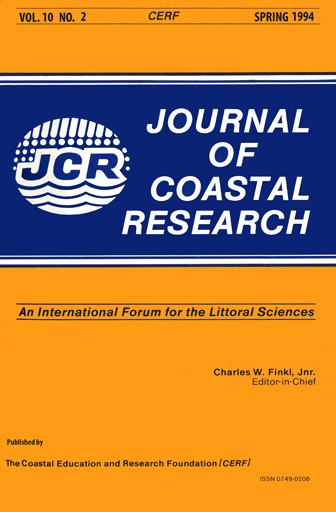Shallow Stratigraphy of Lake Okeechobee, Florida: A Preliminary Reconnaissance
Keywords:
Erodibility, geological history, seismic profiling, stratigraphy, vibracoring, X-radiographyAbstract
The shallow stratigraphy of Lake Okeechobee in south-central Florida has been studied on a preliminary basis using a high resolution seismic profiling technique combined with vibracoring. The main purpose was to investigate the unconsolidated sediment infill, but incidental information on the first few meters of the underlying rock head has been obtained. The deepest reflector is from a surface exhibiting basins separated by "reefs" or ridges and cut by V-shaped channels. The basins are filled by thin calcareous and similarly channelled horizons, probably the Caloosahatchee-Fort Thompson Formation. The overlying sediments form an incomplete cover and are developed in different areas, having limited overlap. There are three contrasted deposits. Rooted peats occur extensively in the shallow margins at the northeastern and southern ends of the lake. In the northwest a fan of quartz sand reaches its maximum thickness off the Kissimmee River, from which it apparently was derived. It extends over the peats in the northeast quadrant.
The topmost deposit occupies about a third of the lake bed and involves about 0.2 km3 of organic-rich black mud. The mud lies mainly in the northern half of the lake and has an eccentric location with greatest depths to the northeast of the central axis of the lake and an inclined surface sloping down to the southwest. The mud thickness is frequently less than 30 cm, but reaches 80 cm in one area. The older, deeper part of the mud succession is differentiated into various colored clays interbedded with sand and shells, whereas younger mud is undifferentiated and spreads over the peats of the shallow periphery. The lower sections of clays show submillimeter lamination, which is evidence that neither storms nor bioturbation have reworked these deposits. Density and shear strength profiles confirm that only the thin surficial flocculent layer evident in some places is liable to periodic reworking by wave-induced currents.


